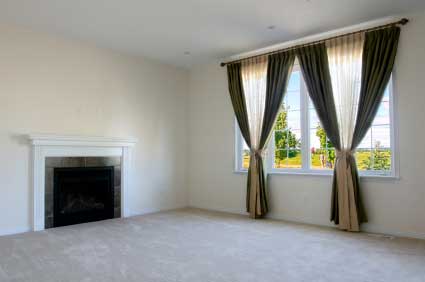Visual Choices in Selecting Curtains – Fullness, Length and Heading Tape
Fullness, Length and Heading Tape
Reading on from the length of curtains, ceiling to floor or sill and puddled curtains. We will now go over the headings and curtain fullness.
The heading is the top of the curtain, where the fabric is pleated or gathered.
A curtain heading tape is used to create these effects, these range from a simple gathered tape which requires 1 ½ time the length of the track in fabric width to pencil pleats, 2 ½ times the length of the track in fabric width, pinch pleats 2 times the track length in fabric width.
The fabric width creates the curtain fullness. So the selection of a curtain heading tape will determine the finished curtain fullness.

French Pleats are used here on a rod and ring type track to create a neat and tidy head to the curtain, they are full length to the ground but the interesting way they have been held together in an hour glass format with tie backs mean that they are shorter at both sides which creates a design feature. These curtains are used to add privacy, yet allow some vision out and sunlight in.
There are other types of curtains that do not require a tape, like tab top curtains, looped headings, pocket rod curtains but similar calculations are still made to achieve the desired curtain fullness.
To generalize, the fuller the curtain the more opulent it looks. Gathered headings are best used with a pelmet to detract the eye, as they can look a little skimpy on fabric. Pencil pleats produce a neater, simple fullness and they work well with most fabrics. Pinched pleats look great with a heavier fabric and full-length curtains, they hang well and always look neat at the top.
